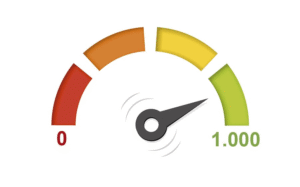Strategic Investment Strategies in a Stagflation Era
During periods of stagnation, it's vital to reclaim your control and explore beneficial alternatives to ensure your financial journey keeps moving forward.
Smart Investment Tips for Economic Stagnation
The U.S. economy can often present challenges, even for seasoned investors.
When high inflation pairs with sluggish economic growth, it creates a tricky situation for investment choices.

Let’s examine the traits of this situation, grasp its effects, and look into strategic investment options for safer navigation.
Grasping Stagflation
Stagflation refers to a scenario where persistent inflation occurs alongside stagnant or declining economic growth, meaning prices rise while economic activity lags.
Unlike regular inflation, which generally coincides with growth, stagflation poses greater risks because:
- Increased unemployment due to economic slowdown.
- Wages lag behind inflation, eroding purchasing power.
- Risky assets struggle amid uncertainty and low market confidence.
Historically, the 1970s in the U.S. serve as a classic example of stagflation, demanding strategic monetary and fiscal policy adjustments to address the crisis.
Investor Challenges
Investing in a stagflation period presents challenges for two primary reasons:
- Fixed income loses its charm: low-yield bonds fail to offset the purchasing power loss from inflation.
- Equities experience turbulence: companies face higher production costs and decreased demand, impacting profits and stock values.
The focus should be on protection, identifying assets that maintain real value and might thrive in inflationary times.
Investment Approaches in High-Inflation, Low-Growth Times
TIPS – Inflation-Protected Securities
The Treasury Inflation-Protected Securities (TIPS) are highly recommended for safeguarding investments against inflation.
Unlike regular bonds, its principal is modified in line with the Consumer Price Index (CPI), which helps maintain real returns.
Commodities
Traditionally, commodities like gold, silver, oil, and agricultural goods tend to increase in value during inflationary times.
Gold is often viewed as a reliable store of value, particularly in uncertain circumstances. Oil and energy investments can thrive when inflation is fueled by rising energy prices.
Real Estate Investment Trusts (REITs) and Physical Real Estate
The real estate market can serve as a solid safe haven, especially in regions with consistent demand, like major cities. Rental income usually adjusts for inflation, thus safeguarding investor returns.
Defensive stocks
Firms operating in sectors less affected by economic fluctuations tend to enjoy stable demand even in downturns, as their offerings remain essential. Some examples include:
- Healthcare: hospitals, pharmaceutical companies, and health insurers.
- Consumer staples: food, hygiene, and cleaning products.
- Utilities: electricity and water services.
International Investments
Exploring investment options beyond the U.S. can help mitigate risks, especially when other nations are experiencing different economic trends. ETFs focused on emerging or established markets can provide both security and fresh prospects.
The Role of Cash and Liquidity
Maintaining some cash or easily convertible assets in your portfolio is a vital defensive tactic. In uncertain times, having the ability to act swiftly can be a game changer.
It’s crucial, however, to strike a balance, as holding onto cash can diminish in value due to inflation.
Pitfalls to Avoid
- Long-term debt with low fixed rates can lose real value.
- Cyclical sectors, like automotive and tourism, face greater challenges.
- Investments with high leverage: increased credit costs affect profits.
Shifts in Mindset
Dealing with stagflation demands more than just adjusting your portfolio — it calls for a transformation in your investment perspective.
Exercise patience, as securing quick returns is tougher in this climate. Focus on quality by prioritizing strong assets known for their durability.
Assess your risk tolerance — as volatility rises, safeguarding your capital becomes imperative.
Economic Forecast and Indicators of Change
The U.S. economy is vibrant and can recover from stagflation through effective actions, including stringent monetary policies to tackle inflation.
To encourage growth, fiscal reforms and targeted investments in infrastructure and technology are essential.
Keeping an eye on metrics like unemployment rates, quarterly GDP, core inflation, and consumer confidence can help predict economic cycle shifts.
In times of high inflation and low growth, your investment approach should be cautious, strategic, and disciplined.
It’s crucial to recognize that during stagflation, the priority isn’t merely growth — but rather preserving and, where possible, safely enhancing your wealth.





